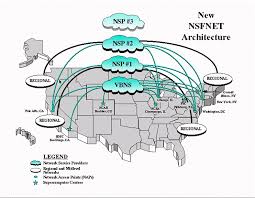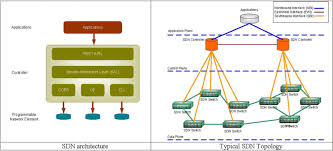Purpose of the assessment (with ULO Mapping)
This assignment is designed to assess students’ knowledge and skills related to the following learning outcomes:
a.Analyse and discuss the significance of inter networking for contemporary organisations.
b.Explain human factors in achieving business and technical goals through planning and design.
c.Investigate and develop architectural inter networking design for the business and application domains.
d.Analyse and report on the current and future state of the inter networking infrastructure and its applications.
e.Implement a process to support the administration and management of inter networking.
MN503 Overview of Inter networking Assignment-Melbourne Institute of Technology Australia.

QUESTION 1: Error detection and Checksum Methods
a.Why checksum is important entity in transmission of Ethernet frames. Briefly state the term Cyclic Redundancy Checksum (CRC) and its uses.
b.Calculate the CRC for the X binary data shown in Figure 2, when the divisor is 10001.(Y) 2 = (180 + X) 10 X = Last two digits of your MIT ID (i.e. if your ID is MIT123456, then X=56)
c.Compile a frame that would be sent after appending the checksum to the original data, furthermore, how would you prove that the frame received is error free?
MN503 Overview of Inter networking Assignment-Melbourne Institute of Technology Australia.
QUESTION 2: IP Addressing and Subnetting
a.Why IP addresses are required and what is their importance. Comment on various IP addressing schemes and different classes of IP address. Also, explain classless IP address scheme.
For the given IP address and subnet mask 250.218.X.Y, 255.255.0.0 compute the following.
Where X = Last two digits of your MIT ID (i.e. if your ID is MIT123456, then X=56)
And Y = Third and fourth digits from your MIT ID (i.e. if your ID is MIT123456, then Y=34)
b.Find the network address
c.Compute the number of valid hosts.
d.Identify the IP class.
c.Broadcast address.
QUESTION 3 – CLIENT SERVER ARCHITECTURE
a.Outline the client-server architecture and elaborate its characteristics. Draw a layered diagram of a generic client server architecture with database support. Explore the concept of mid dleware in client server networks and highlights various mechanism for mid dleware configurations.
b.Differentiate between thick client and thin client use illustrations to enhance your answer. Evaluate in what circumstances thin client schemes outperform the thick client configuration. Briefly state the concept of intranet and elaborate the process of converting an intranet to extranet with the help a diagram.
c.Discuss the structure of internet and show its component with the help of a suitable diagram
QUESTION 4 – PROTOCOL AND TCP/IP ARCHITECTURE
a.Describe the term protocol and express the requirements for defining protocols, also extend your discussion by explaining the three layered model for a protocol with the help of appropriate illustration. Discuss the notion and purpose of TCP/IP Protocol Suite.
b.Identify the differences between the TCP and UDP protocols and their application. Furthermore, Illustrate the PDUs in the TCP/IP Architecture with the help of a diagram and also list various segments of TCP and UDP frame headers.
c.Draw a block diagram depicting the hierarchical structure of layer seven (i.e. application layer) protocols within TCP/IP protocol suite.
QUESTION 5 – NETWORK DESIGN
Analyse the following network of a company and answer the following questions.

a.Identify the design mistakes in the above network and correct those mistakes by drawing a correct topology diagram based on proposal and point out the changes that will improve the network.
b.What steps should we take if we need to enhance our present capacity in terms of user and performance? Justify your answer.
QUESTION 6 – CASE STUDY
Local to global learning and beyond
Technology is an essential teaching support for schools in Queensland, with all students having internet access for finding information and communicating with teachers and classmates. With broadband, students and teachers can move beyond the classroom to collaborate online with other schools and students worldwide.Global classrooms
Students at Hermit Park Primary School in Town sville use the internet to work on school projects with pupils in Denmark, the Netherlands, Finland and Sri Lanka. Junior students from schools in these countries are together researching ways to save rainforests in Borneo that will protect orangutans while still providing jobs for forest workers.
‘Our students can share ideas with children from a wide range of cultures’, said school principal, Clayton Carnes. ‘It helps them understand different opinions and other points of view.’ ‘The school’s current broadband connection was adequate two years ago. School staff use the internet for staff development and require a high-speed connection for information such as online learning resources. Added to the increasing use of the internet for online voice and video collaboration, the high speed offered by the National Broadband Network (NBN) can’t come too soon’, said Clayton. Media-rich learning At St Peters Lutheran College in Brisbane, with 2800 users on their network, the broadband issue is quite different. The school already has high-speed connections of up to 1 gigabit per second on the educational (Australian Academic and Research Network) AARNet network. It is also trialling a package that includes a mailbox and 25 gigabytes of storage for each student.
MN503 Overview of Inter networking Assignment-Melbourne Institute of Technology Australia.

With the time, as the IT demands are scrambling need for a stronger and better Internet/networking facilitation has become inevitable. There are two critical challenges for the new solution. First, it need to improve the performance of the network and reduce the maintenance overhead across the Hermit Park Primary School, to provide reliable connectivity for Wi-Fi access points (APs), security cameras and access control, as well as printing equipment. Second, given the rapidly-evolving nature of multimedia based teaching material, the solution needed to futuristic and expandable, for example by supporting bring your own device BYOD support might be established in the future.
Answer the following questions based on the case study:
a.Propose a network to address the requirements and weaknesses in the present network.
b.MN503 Overview of Inter networking Assignment-Melbourne Institute of Technology Australia.
MN503 Overview of Inter networking Assignment-Melbourne Institute of Technology Australia.



